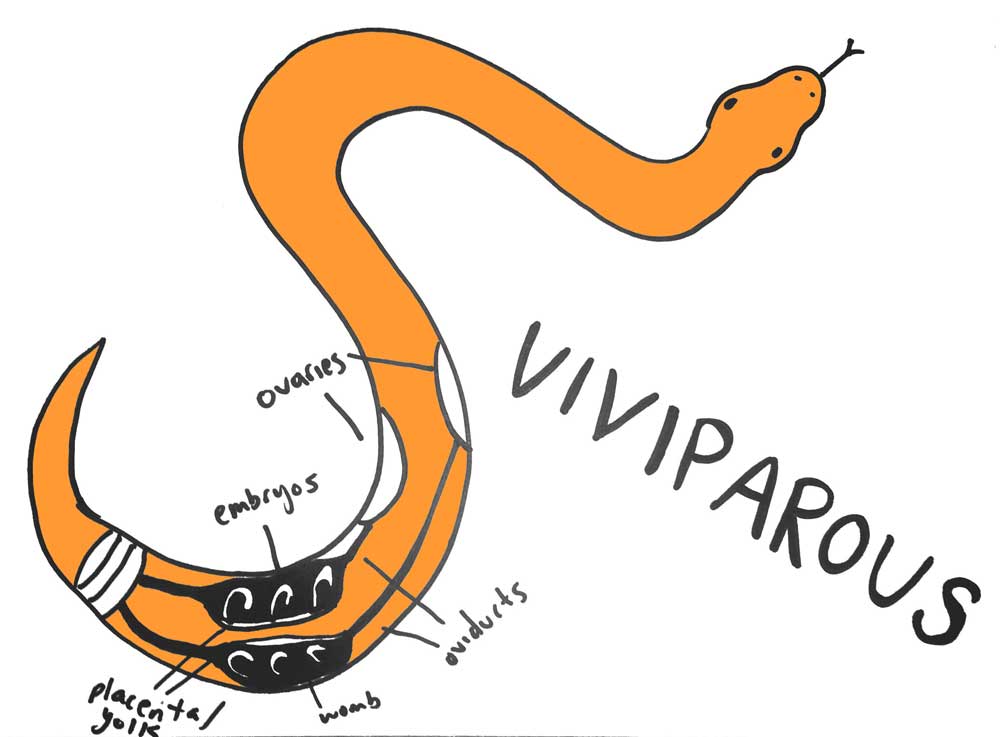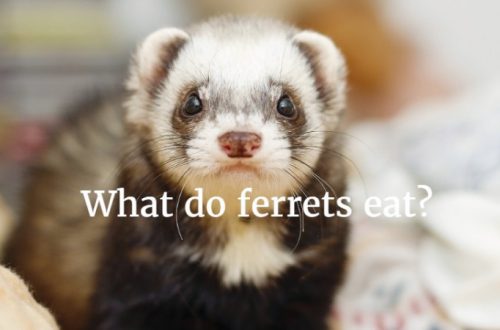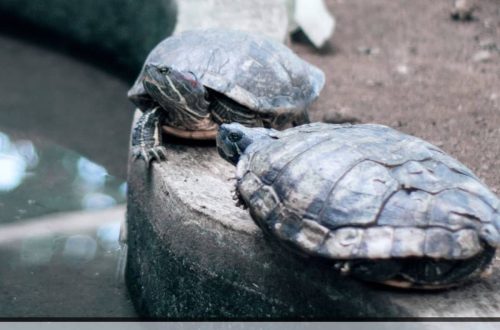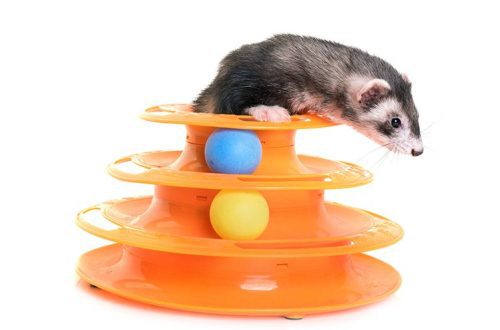
Snakes: their features, their way of life and how they can give birth
Snakes belong to the scaly order. Some of them are poisonous, but many more are non-poisonous. Snakes use venom for hunting, but not for self-defense. It is a widely known fact that the poison of some individuals can kill a person. Non-venomous snakes use strangulation to kill prey, or swallow food whole. The average length of a snake is one meter, but there are individuals less than 10 centimeters and more than 6 meters.
Distributed on almost all continents except Antarctica, Ireland and New Zealand.
Appearance
Long body, no limbs. From legless lizards, snakes are distinguished by a movable joint of the jaws, which allows them to swallow food whole. The snakes also missing shoulder girdle.
The entire body of the snake is covered with scales. On the side of the abdomen, the skin is somewhat different – it is adapted for better adhesion to the surface, which makes it much easier for the snake to move.
Shedding (change of skin) occurs in snakes several times a year throughout their lives. It changes in one moment and in one layer. Before molting, the snake looks for a hidden place. The vision of the snake during this period becomes very cloudy. The old skin bursts around the mouth and separates from the new layer. After a few days, the snake’s sight is restored, and it crawls out of its old scales.
snake moult very useful for a number of reasons:
- Old skin cells are changing;
- So the snake gets rid of skin parasites (for example, ticks);
- Snake skin is used by humans in medicine to create artificial implants.
Structure
A distinctively large number of vertebrae, the number of which reaches 450. The sternum and chest are absent, when swallowing food, the ribs of the snake move apart.
Skull bones moving relative to each other. The two halves of the lower jaw are elastically connected. The system of articulated bones allows the mouth to be opened very wide in order to swallow large enough prey whole. Snakes often swallow their prey, which can be several times the thickness of the snake’s body.
The teeth are very thin and sharp. In poisonous individuals, large and backward-curved poisonous fangs are located on the upper jaw. In such teeth there is a channel through which, when bitten, poison enters the body of the victim. In some poisonous snakes, such teeth reach a length of 5 cm.
Internal organs
Have an elongated shape and are asymmetric. In most individuals, the right lung is more developed or the left is completely absent. Some snakes have a tracheal lung.
The heart is located in the cardiac sac. There is no diaphragm, which allows the heart to move freely, escaping from possible damage.
The spleen and gallbladder function to filter the blood. Lymph nodes are absent.
The esophagus is very powerful, which makes it easy to push food into the stomach and then into the short intestine.
Females have an egg chamber that acts as an incubator. It maintains the moisture level in the eggs and ensures the gas exchange of the embryo.
Feelings
- Smell
To distinguish between odors, a forked tongue is used, which transmits odors to the oral cavity for analysis. The tongue is constantly moving, taking particles of the environment for a sample. In this way, the snake can detect prey and determine its location. In water snakes, the tongue picks up odor particles even in water.
- Vision
The main purpose of vision is to distinguish movement. Although some individuals have the ability to get a sharp image and see perfectly in the dark.
- Thermal and vibration sensitivity
The organ of heat sensitivity is highly developed. Snakes detect the heat that mammals radiate. Some individuals have thermolocators that determine the direction of the heat source.
Earth vibration and sounds are distinguished in a narrow range of frequencies. Parts of the body in contact with the surface are more sensitive to vibration. This is another ability that helps with tracking down prey or warning the snake of danger.
Life
Snakes are distributed almost everywhere, excluding the territory of Antarctica. Predominant in tropical climates: in Asia, Africa, Australia and South America.
For snakes, a hot climate is preferable, but conditions can be different – forests, steppes, deserts and mountains.
Most individuals live on the ground, but some have also mastered the water space. They can live both underground and in trees.
When cold weather sets in, they hibernate.
Food
Snakes are predators. They feed on a variety of animals. Both small and large. Some species have a preference for only one type of food. For example, bird eggs or crayfish.
Non-venomous individuals swallow prey alive or suffocate it before eating. Venomous snakes use venom to kill.
Reproduction
Most individuals reproduce by laying eggs. But some individuals are ovoviviparous or can give birth live.
How do snakes give birth?
The female is looking for a nesting place that will be protected from sudden changes in temperature, heat and predators. Most often, the nest becomes a place of decay of organic material.
Number of eggs in clutch ranges from 10 to 100 (in especially large pythons). In most cases, the number of eggs does not exceed 15. The exact gestation period has not yet been identified: females can store live sperm for several years, and embryo development depends on conditions and temperature.
Both parents guard the clutch, scare off predators and warm the eggs with their warmth. Elevated temperature promotes faster development.
Baby snakes often come from eggs, but some species of snakes are viviparous. If the incubation period is very short, the babies hatch from eggs inside the mother’s body. This is called ovoviviparity. And in some individuals, instead of the shell, a placenta is formed, through which the embryo is fed and saturated with oxygen and water. Such snakes do not lay eggs, they are able to give birth to live babies immediately.
From birth, snake babies become independent. Parents do not protect them and do not even feed them. Because of this, very few individuals survive.







